The review sample was kindly provided free of charge in exchange for an honest review.
I haven't received monetary or any other kind of compensation and I don't use affiliate links.
The price of the iBasso DX320 is $1600 and you can order it from
here.
iBasso
iBasso is a well known manufacturer of audio gear like earphones, DAPs and USB DAC dongles.
They started almost ten years ago to become one of the most beloved brands among audiophiles thanks to the excellent sound quality and price to performance ratio of their products.
The DX300 was their multi-awarded flagship DAP combining high end sound, flagship smartphone-like performance and swappable amplifier modules.
It used four pieces of the Cirrus Logic CS43198 DAC chip that was soon discontinued as Cirrus Logic couldn't meet the increased demand.
Thankfully, iBasso were fast enough to adopt another brand DAC chip and they have released a successor DAP named DX320.
The DX320 builds on the legacy of the DX300 with the new DAC chip, even faster operation, the latest Android version and the same swappable AMP card system but it comes with a $400 price increase.
iBasso DX320 - Technical highlights
The DX320 is visually identical to the DX300 but inside it packs two pieces of the BD34301EKV DAC chip, developed as a part of ROHM’s high-grade MUS-IC series representing the pinnacle of audio ICs.
Brand new is also the default AMP card, the AMP11 MK2s which is based on AMP8’s discrete circuit and is equipped with 3.5mm single ended, 2.5mm balanced and 4.4mm balanced outputs ports (all ports can also be changed to line outputs).
A +/-18V power supply provides sufficient and stable energy for the AMP section.
The maximum voltage output of DX320 reaches 7.1Vrms, and thanks to the independent battery power supply, the maximum output power at 32Ω load is as high as 1200mW.
In order to have the best match with the DX320, the AMP11 MK2s was tuned with some electrolytic and film capacitors, including the new custom iBasso premium AI foil audio capacitor.
The DX320 shares the same technical invocations introduced with the DX300 but with carefully re-designed circuitry and implementation to allow all the quality of the BD34301EKV to shine through.
In the DX320, iBasso adopted an in-house developed FPGA-Master technology.
The FPGA-Master, as the audio system controller, directly requests audio data from the SoC, and plays a major role in signal reproduction and maintaining signal integrity.
It synchronizes and generates all audio clocks at the same time utilizing two Accusilicon femtosecond oscillators, to achieve a fully synchronized single clock source. The FPGA and oscillators also reduce jitter to an extremely low level, building an exceptionally clean digital audio signal.
Android audio processing does not have high system priority. The addition of FPGA-Master technology raises audio scheduling to the system’s highest priority processing sequence, creating a stable and interference-free digital audio system for the DX320.
The patented Dual Battery Power Supply Structure that was introduced with the DX300 is also used in the DX320.
When a single battery is powering the entire system, a large demand of current by the digital section and the analog section can affect each other, which can cause distortion degrading the sound quality.
The DX320 utilizes a patented dual battery structure with the AMP and digital section being powered by independent batteries.
The independent battery provides a sufficient power supply to ensure the stability of the AMP section and it isolates the digital section interference to achieve better overall sound quality.
This ensures that the analog section is receiving extremely clean DC, allowing the AMP section of the player to evolve to its full potential.
Except for the audio circuitry, a modern era DAP should have a powerful CPU and sufficient RAM to allow for a smooth operation.
The DX320 is equipped with the Qualcomm Snapdragon 660 as the SoC.
With the powerful performance of this 14-nanometer 8-core processor, the operation is outstanding while with 6GB of RAM there is ample memory for a consistent and fast response while the 128GB of onboard storage space allows for the convenience of installing more Apps and Music.
Of course there is also a micro SD card slot for expanding the storage up to 2TB.
The DX320 supports bidirectional Bluetooth 5.0, with an enhanced antenna that gives longer transmission distance and a stronger signal.
Full specifications and more information are available
here.
Screen
The DX320 adopts an IPD 6.5" screen with a very narrow bezel, covering almost all the front panel.
The screen resolution is 2340x1080 pixels and it has excellent visibility.
Web pages, cover art, videos and everything else are displayed with the most vibrant and bright colors.
There is also an indicator light on the top of the screen, which allows for the working status of the DX320 at a glance as long as you don't use the protection case which covers the light.
Design and build quality
The chassis is made from a single piece of CNC-machined aluminum, the construction is durable with excellent craftsmanship and the DX320 is available in two colors, black and blue.
The DX320 is a luxurious looking player with a neat and modern design totally worthy of the flagship status.
With a size of 162x77x17mm and a weight of 310g, it is not the most compact sized player and not that pocketable but still, it can be used with one hand and you can carry it around in a small pouch.
Layout
The DX320 adopts a simple and minimalistic design without too many buttons and ports.
With the default Amp11, you get 4.4mm and 2.5mm balanced outputs along with a 3.5mm single-ended output that are housed at the bottom of the player.
At the top you will find the USB type C port and a 3.5mm digital coax output.
The on/off - volume scroll wheel is located at the top of the right side along with three, discreet, buttons that are used for controlling the playback and their working sequence can be altered through the main menu.
The SD card slot is located at the left side and allows for changing the card on the go.
At the bottom side of the back plate, there is a tiny semi transparent rectangular window that will glow green when the AMP13, Nutube, amplifier module is used.
Android User experience
The DX320 runs the latest Android 11 OS so you can freely install most apps and enjoy online streaming with your favorite services.
The system runs lightning fast, the DX320 is very responsive and smooth like a flagship smartphone, you can easily multitask while listening to music without any single trace of lag.
Thanks for the 5G WiFi MIMO antenna, the DX320 boasts an ultra fast and stable wireless reception so you can stream or download high resolution files at lightning fast speeds.
Mango OS
The DX320 has also a Linux-based system specifically developed for pure audio playback, the famous iBasso Mango OS.
With the powerful GPU acceleration of the Qualcomm 660, the fluency of the Mango system is close to that of the Android.
This version of the Mango OS has accumulated a lot of optimization results for music decoding and underlying driver algorithms.
The Mango OS disables Bluetooth and WiFi to reduce EMI interference while it also minimizes CPU and RAM usage to maintain the system purity to achieve the best possible sound quality.
The in-house developed Mango player APK brings together the EQ algorithm accumulated by iBasso for many years.
In addition to the graphic equalizer, the DX320 adds a more professional parametric equalizer, providing 6-band with 7 types of high-precision filters of all types. Each section of the filter can be individually adjusted to adjust the F value, Q value and gain, with detailed visual adjustment capabilities. It can achieve fine adjustment with almost no distortion, and freely defines EQ for different listening situations, bringing a more professional and advanced gameplay than graphic EQ.
The Mango OS with the embedded player has an excellent sound quality and a well designed and responsive UI so I suggest that it should be your primary choice if you are listening to music files stored in the SD card.
SRC bypass
The DX320 bypasses the SRC from the system level, whether it is the built-in Mango player or the third-party steaming APK, you can enjoy the system-level “Non-SRC” feature.
USB DAC and digital transport
You can use the DX320 as a USB DAC connected to a PC or any other platform through the USB type C port.
You can also use the DX320 as a digital transport to an external DAC through the same USB type C port or the 3.5mm coaxial output.
YouTube and Multimedia
The DX320 is very good for watching YouTube videos and enjoying other multimedia content thanks to the lag free performance, the excellent visual quality and the correct synchronization between sound and video.
Battery duration
The DX320 has the patented dual battery power supply structure where the digital section gets its own 4000mAh battery while the amp gets a 2000mAh one with separate charge indicators at the top information bar.
Both batteries support fast charging and need about 2.5 hours to get fully charged while they can provide about 10 to 11 hours of actual playing time from the balanced output and with the WiFi enabled.
Accessories
The DX320 comes packed in the familiar iBasso silver and blue box.
Open it up and you will find the player, a high quality leather case, two screen protectors, a USB cable, a coaxial adapter and the burn-in cable.
Strangely the carrying case is of green color rather than black or blue.
Associated gear
The DX320 was left playing music with the burn-in cable attached for more than 200 hours prior to listening tests.
Additionally both AMP12 and AMP13 were also fully burned.
I have used most of my headphones and earphones, like the Focal Clear Mg, HiFiMan Arya V3, Meze Audio Elite, FiiO FDX and others.
All headphone cables are of pure silver and made by
Lavricables.
Power output and noise
The DX320 with the stock amp is very powerful for a DAP and from the balanced output it can run most headphones on the market minus some really hard to drive planar magnetic ones.
The same applies for the AMP12 which is even more powerful while the AMP13 might look less powerful on specs but it actually worked pretty well with all the above mentioned headphones.
The stock AMP11 is hiss free even with more sensitive IEMs while the AMP12 can get a little noisy when high gain is used but only with sensitive earphones.
With the Focal Clear Mg I couldn't detect any hiss or noise even at the high gain.
The AMP13 has two different outputs, one with a lower power that also yields lower background noise and works pretty well with sensitive earphones and one of higher power output which is a little noisier.
Still with headphones like the Focal Clear Mg or the Meze 109 PRO there was no audible noise.
Listening impressions (stock AMP11 MK2s)
The DX320 sound signature is perfectly neutral, linear, exceptionally transparent and very lively.
This is a true reference, high fidelity tuning with top tier technicalities.
Compared to the original DX300, the sound is a bit less warm and a touch more dry and lean, slightly sharper on the treble and less relaxed but with undeniably superior transparency, greater definition, faster transients and greater dynamics.
Bass is deep and extended while it remains exceptionally tight and controlled with strict timing and pace.
Layering and definition are exemplary while dynamic swings sound utterly contrasted and impactful.
Pair the player with a hard hitting headphone, like the Focal Clear Mg and you are going to be treated with an astounding bass performance no matter the music you throw at it.
Mid range is harmoniously intense and balanced with colorful overtones that are not excessively euphonic or lush.
Voices and instruments sound lifelike thanks for the correct tonality and the realistic timbre while articulation is of the finest quality with very clean intonation.
The DX320 sounds crystal clear and resolving with excellent definition between every single note but they don't sound detached from the whole.
The sound is very musical, not that organic or excessively analog but still very natural flowing without any imposed artificiality.
There is a certain treble focus and a sparkling liveliness in the higher end register presentation that nevertheless it should not be confused with any kind of brightens or hardness.
The sound is fast and agile but it manages to stay rather smooth and fatigue free, suitable for long term listening but in no way forgiving to lesser quality material.
The DX320 is not the kind of player that you are going to use in order to tame an aggressive sounding headphone or enhance the missing sub-bass.
This is the type of player that makes sure that your headphones will sound exactly as they were tuned by their manufacturer, no more - no less.
The texture continues to be on the lean - dry side but on par with the rest of the frequency range, so the end result is the great textural coherency despite not being that visceral.
The textural consistency combined with the balanced decay timing, that is not too fast or too loose, makes all instruments fade away with the same of intensity adding a lot to the overall realism while listening to symphonic music.
Micro-details retrieval and resolution are excellent and with the added benefit that they are presented as a well integrated part of the whole rather than being detached so the sound is not analytical or monotonously detailed.
The DX320 is by no means a clinical or boring sounding player, timbre is certainly not artificial, the tuning is enjoyable and musical but in the end it appears that the focus is more in raw fidelity and transparency than casual emotional engagement.
A most striking aspect about the DX320 is its unanimous ability to carefully reconstruct the all the spatial information and the ambience that is captured inside a recording.
The feeling is that the listener is transported in the recording venue.
Positioning is sharp and precise while the soundstage is not only wide and spacious but it is also deeply layered and well deployed around the listeners head in a holographic and grand scaled manner.
This is something that is well enjoyed with all types of music, be it studio or live productions, but they get particularly highlighted when listening to classical music performances recorded in a concert hall or a cathedral.
Roll your favorite AMP card
What is particularly unique about the modular iBasso DAPs is that you can fine tune the sound by simply using a different amp module.
Like in the DX240 where you can make it sound more musical and less technical by just swapping the stock amplifier module for the AMP8 MK2.
A replaceable AMP card design provides for more variety, personalization, and enjoyment of your music.
Currently, there are three discrete AMP cards compatible with the DX320 (or the DX300).
The DX320 stock AMP11 MK2s, the super class A discrete balanced AMP12 and the single Nutube AMP13.
There is no need to replace the player, just replace the amp card and you can freely switch between the transistor sharpness to the vividness of the tube.
Let's have a closer look.
AMP11 MK2s
Listening impressions with AMP12
The AMP12 module brings a fully discrete balanced circuitry to the DX300 & DX320 with its dedicated 4.4mm headphone and 4.4mm line-out ports.
It offers an ultra-powerful output with a maximum voltage of 8.3V and low distortion ratings of -113dB.
AMP12 has every characteristic of a powerful Class A amplifier offering high-fidelity output with ultra-low distortion and high dynamic range.
The AMP12 comes together with a black leather case.
You can read a full review of the AMP12
here.
AMP12
While listening to the stock DX320 I couldn't help myself thinking that I would gladly exchange some of the supreme technicalities and transparency for a touch more colorful timbre and organic texture that better suit my listening habits.
This is where the AMP12 comes into play, filling the missing harmonies, adding weight and lushness to the sound, transforming the DX320 into a more analogue and emotionally engaging player.
Overall technicalities and fidelity remain, more or less, on the same level but they don't get that pronounced and take a step back allowing for a more relaxed sound.
The sound is not that crystal clear and well defined as with the stock amp but in exchange you get some extra warmth, greater dynamic impact and fuller sound.
Listening with the AMP12 yields a more convincingly realistic timbre with added harmonic variety and much colorful overtones.
The AMP12 is not that different sounding but rather a variation in the same theme and while it is perfectly suited for all types of listening habits it will be more valued by listeners who prefer musicality over technicalities while I can see many others sticking with the stock amp for its technical supremacy and fidelity.
The DX320 with the AMP12 could easily be my end game DAP, well if it wasn't for the AMP13…
Listening impressions with the AMP13
iBasso’s AMP13 features the 6th generation KORG Nutube for an engaging and unique vacuum tube sound.
The Nutube operates exactly as a conventional triode vacuum tube and creates the same characteristically rich overtones that are sought after in triode tubes.
Two stages of amplification are necessary to obtain higher output power.
To have both a more robust tube signature and a higher output power, the AMP13 adopts a dual 3.5mm single-ended output design, with low noise tube output and maximized output at the same time.
AMP13
The low noise tube output of AMP13 utilizes the Nutube 6P1 as a voltage amplifier.
This is followed by digital volume control and current amplification.
The low noise tube output is the output after the first amplification stage. Although the output is not high using this design, the Nutube has a more robust tube sound signature, and noise control is excellent. (2.5Vrms)
In the maximized output, the output passes through a first stage Nutube amplifier, followed by a secondary amplification.
With this, the AMP13 has a higher voltage and current output capability, resulting in better driving capability for headphones and IEMs. (4.1Vrms)
As much as I enjoy a musical sounding solid state amplifier, like the AMP12, my heart always belongs to tubes and their harmonious nature that gets eerily close to reality.
Switching to the AMP13 and you get this taste of tube magic or at least as much of it as a single Nutube can offer.
More harmonic variety and a greater wealth of natural sounding overtones but without sacrificing too much in overall technicalities.
The sound is still clear, transparent, controlled and precise albeit not to the extent of the AMP11 MK2s.
Resolution and overall transparency are not to the caliber of the stock AMP and the sound becomes more relaxed with slower transients, decay is loser but what you hear is got nothing to do with boominess or sluggishness.
The overall sound signature of the high power output, which is essentially a tube - solid state hybrid, resembles much that of the AMP12 but with a bit stepped down dynamics and a touch less of control.
In exchange you get more weighty bass, warmer and sweeter mid-range while treble is smoother and less sharp but without ending blunted.
The low power output sacrifices a little bit more of bass control and firmness for extra weight and viscerallity in the texture.
The sound is now a touch bloomy and loosely bonded, dynamic impact is softer but overtones become even richer, harmonic saturation is more dense and the timbre is in it's most analogue form.
Tubes are famous for their holographic soundstage and the AMP13 manages to value the fame despite being a miniaturized tube design.
An imposingly grand and dimensional presentation that extends the sound outside the listeners head making for a speaker like experience.
The low power output is a master at sculpturing a three dimensional relief with larger sized images but the higher one is more skilful in positioning accuracy and depth layering.
The AMP13 is the timbre realism master and the undisputed King of holography offering the most analogue-like and organic sounding listening experience especially suited for classical music.
A note about power output and noise with AMP13
With full sized headphones I wasn't able to detect any background noise or any short of interference from both outputs even while streaming music over WiFi.
There is an initial microphonic noise when you plug your headphones which then immediately disappears.
With more sensitive earphones you will find out that there is a faint noise floor and you will hear microphonic noise every time you touch the volume control or tap the chassis.
I don't own super sensitive IEMs so I cannot add any further information.
The lower power output can drive a variety of full sized headphones but there is always the risk of pushing the volume into its upper limits and then the amplifier will start clipping.
Take your time
The AMP13 definitely benefits from some warming time and feels at its best state after about half an hour of music playing.
So the best thing you can do is to power on the DX320 and then let it play some music while you fix a drink or warm your milk.
The beauty and the beast - A brief comparison with the FiiO M17 ($1700)
Let's start from the obvious, the
FiiO M17 is huge, not that larger than the DX320 but considerably bigger and heavier.
Measuring 156.4x88.5x28mm and weighing a whole 610g, it is a real beast and not what we call a portable player.
It is almost double the weight and the thickness of the DX320 but it comes with a slightly smaller 5.9" screen.
Design language is also completely different, it is the minimal and classy looking DX320 against the futuristic and industrial M17 with the shiny flashing LEDs at both sides and the oversized volume wheel.
The M17 has a multitude of extra digital and analog inputs/outputs that are not present in the DX320.
And the famous DC mode that bypasses the internal battery to power the output stage directly from an external AC adapter offering a near desktop performance of 1.5W/16Ω, 3W/32Ω and 500mW/300Ω, a power output double than that of the DX320.
Battery capacity is also enormous, with 9200mAh on tap you can have the beast running for about 8 hours at full throttle.
Leaving everything else aside and talking sound only impressions, the truth is that the two of them sound more alike than different. (DX320 with the stock amp)
They are ultra clean, transparent and technical with supreme fidelity while offering the listener plenty of musicality, engagement and timbre realism.
One difference is that the M17 is the more open sounding player with wider soundstage and more precise imaging.
It feels like the listener is placed second to third row where the DX320 is more intimate sounding with close to the performers positioning.
The M17 is also just a touch more refined and clean sounding although a bit more drier than the DX320, especially in the mids.
Bass is more controlled and tight in the M17 with superior authority when it comes to dynamics and impact while it offers more headroom with difficult loads when set to DC mode.
The impressions are related to the stock DX320 amplifier and of course you can fine tune the stock sound by simply using another amp module.
Truth is that both players are of flagship caliber and absolutely excellent sounding despite their minor differences.
For a more portable friendly player and amp rolling fun you can choose the DX320 but if you need something more versatile regarding the inputs and outputs or very powerful to double as desktop gear then you should buy the M17.
In the end
Simply put, the iBasso DX320 is one of the best high end players available today with flagship level performance pushing the boundaries of what digital audio players can do in terms of sound quality and user experience.
It is an end game DAP with the pluses of the relatively compact size, the reasonable asking price and swappable amplifier card system which leads to further sound paths.
Be it with the stock amp or not, the iBasso DX320 is the apex of the digital audio players with an overall performance that is very hard to beat and a real challenge for iBasso to get it surpassed in the near future.
Test playlist
Copyright - Petros Laskis 2022.































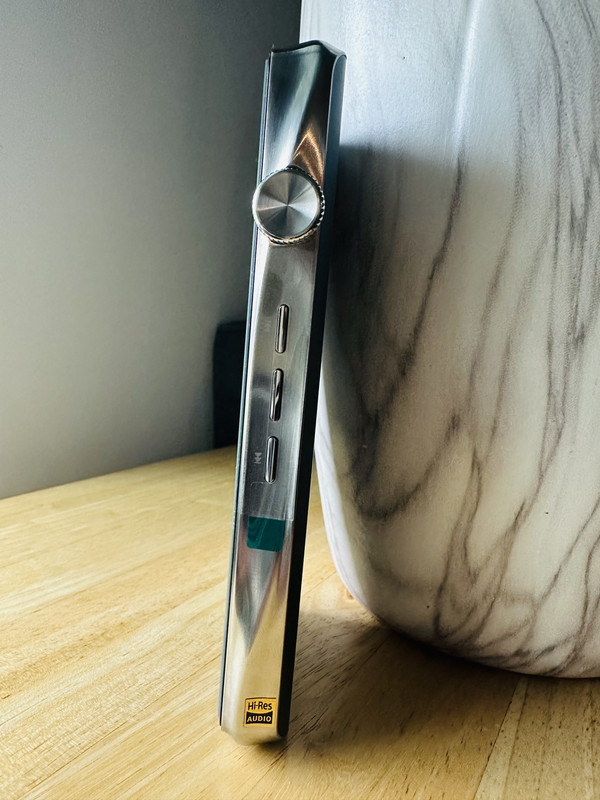
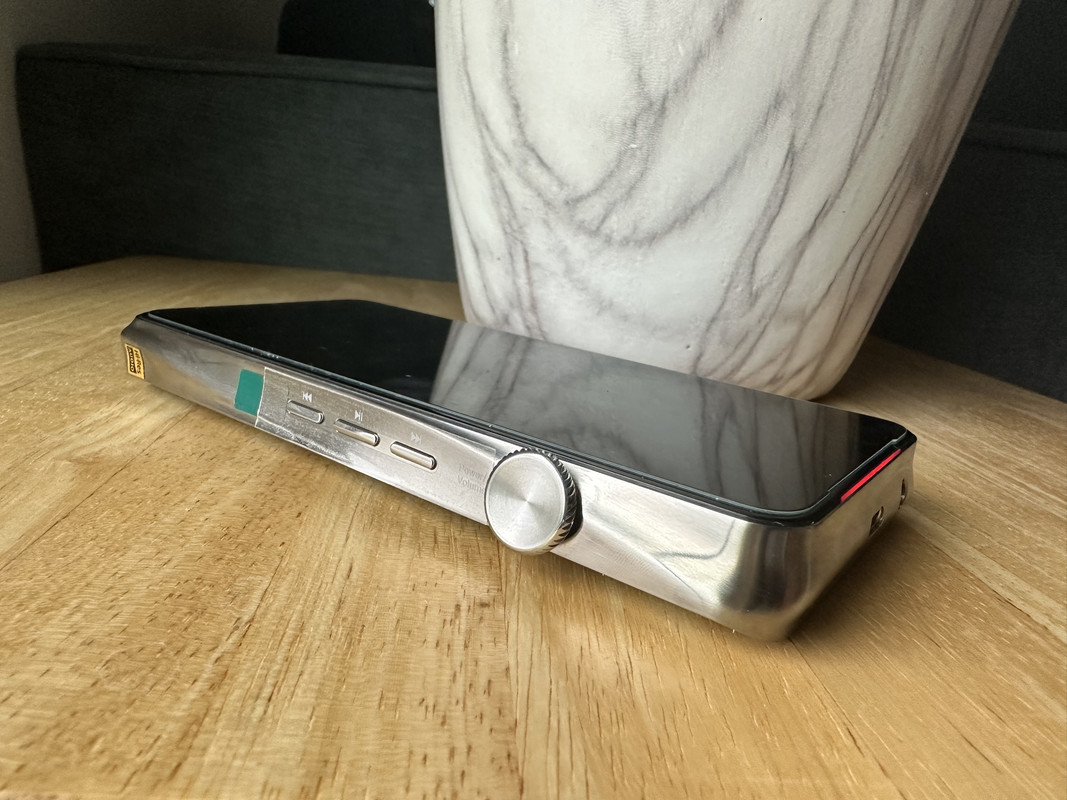
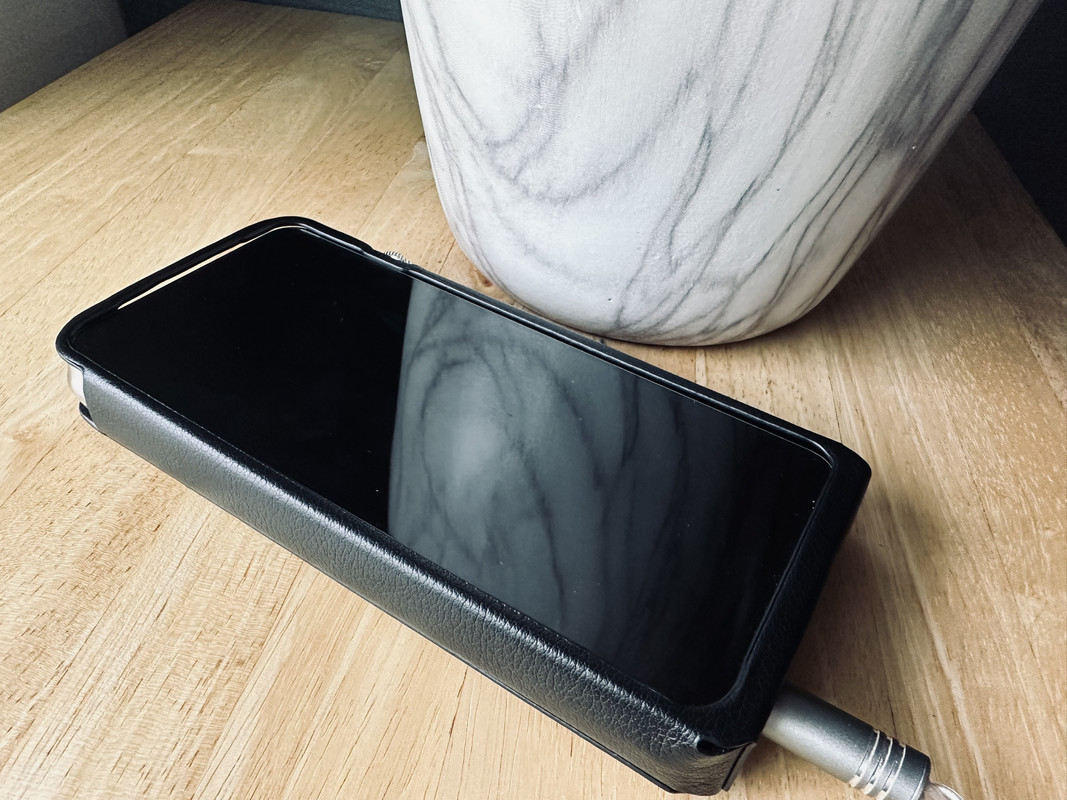
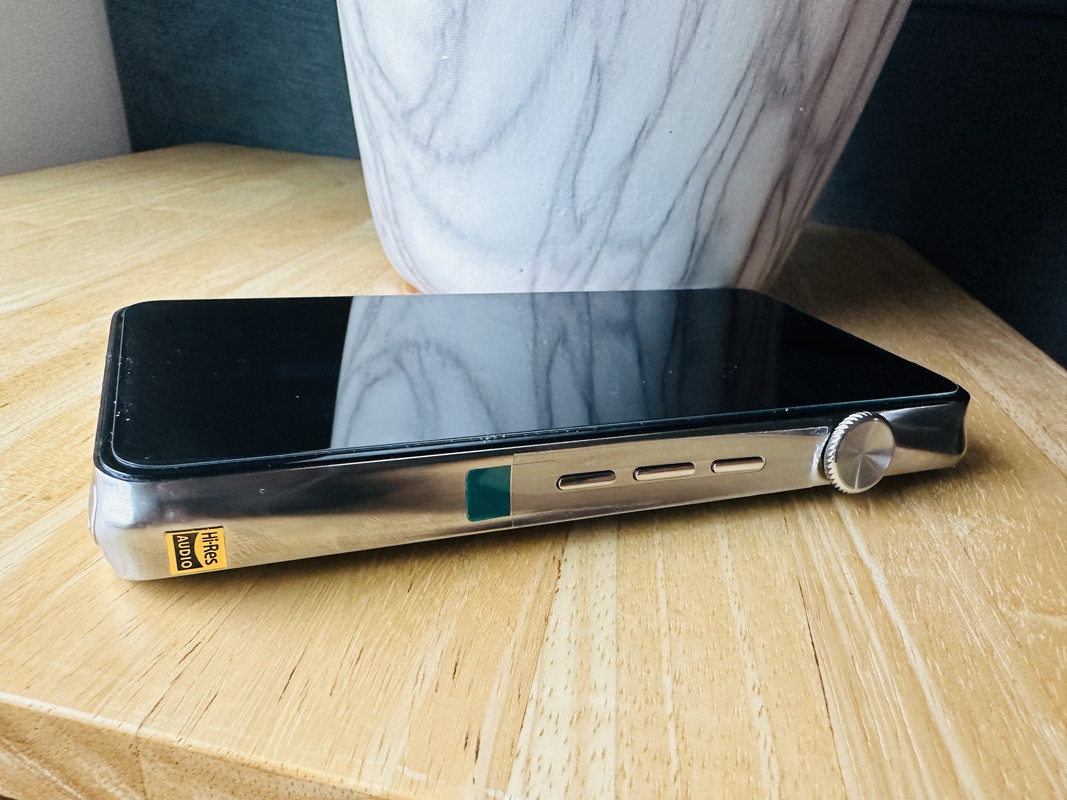
 . That was just a tease. Basically, for watching movies, I recommend you to get Ibasso DC-06. It is a wonderful dongles with Ibasso house sound, a bit warmer than typical references house sound. It has no battery to care for, and it can be plug and play. Using the Dx320 as an external DAC has a problem of syncing video and audio timing. There will be a lagging delay between video and audio.
. That was just a tease. Basically, for watching movies, I recommend you to get Ibasso DC-06. It is a wonderful dongles with Ibasso house sound, a bit warmer than typical references house sound. It has no battery to care for, and it can be plug and play. Using the Dx320 as an external DAC has a problem of syncing video and audio timing. There will be a lagging delay between video and audio.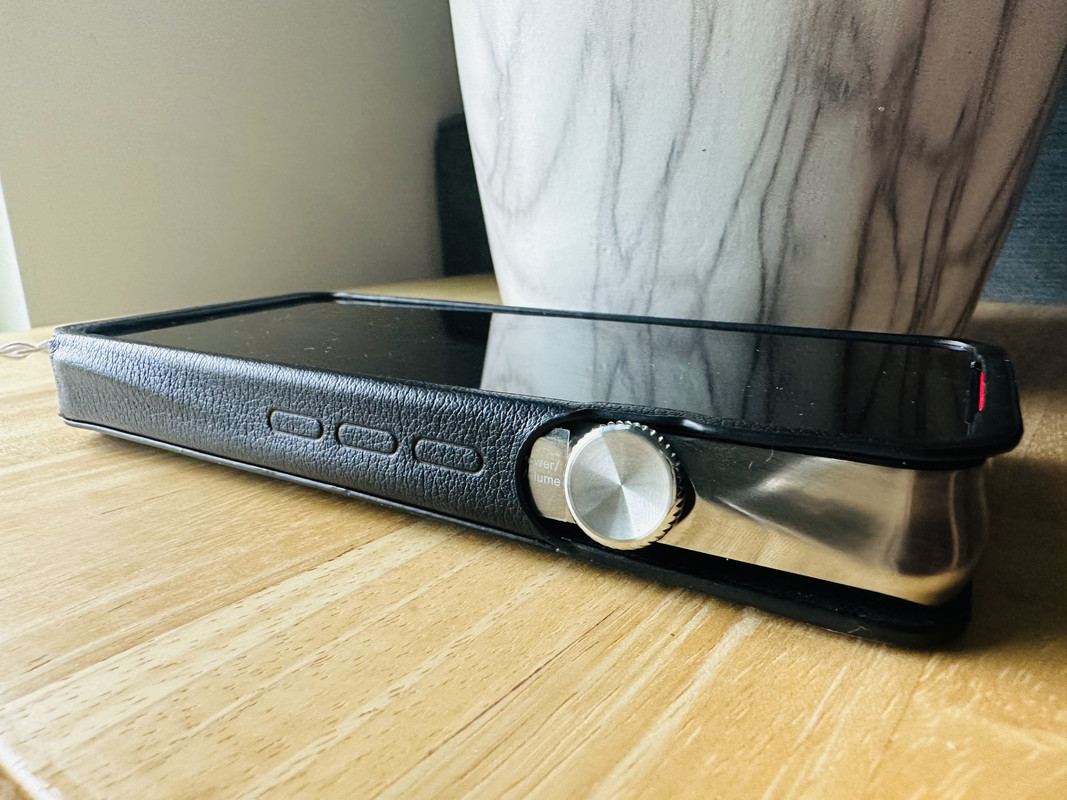

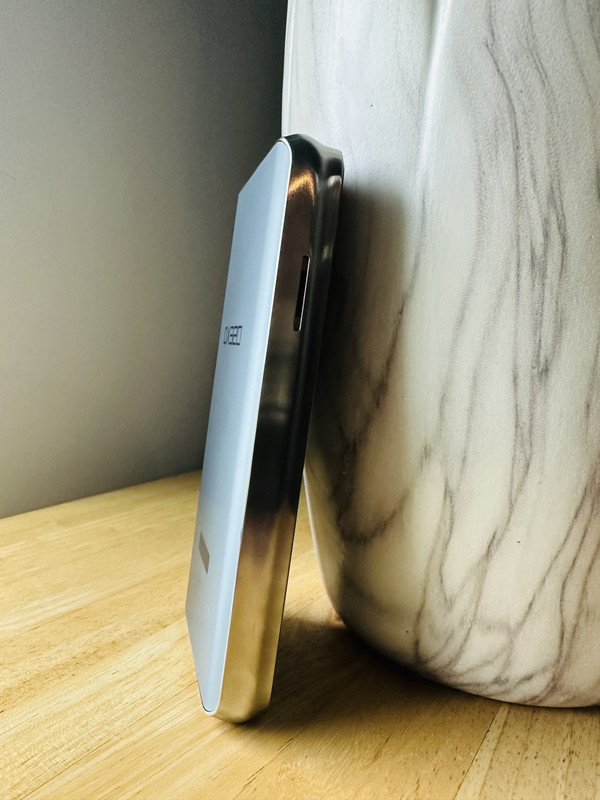
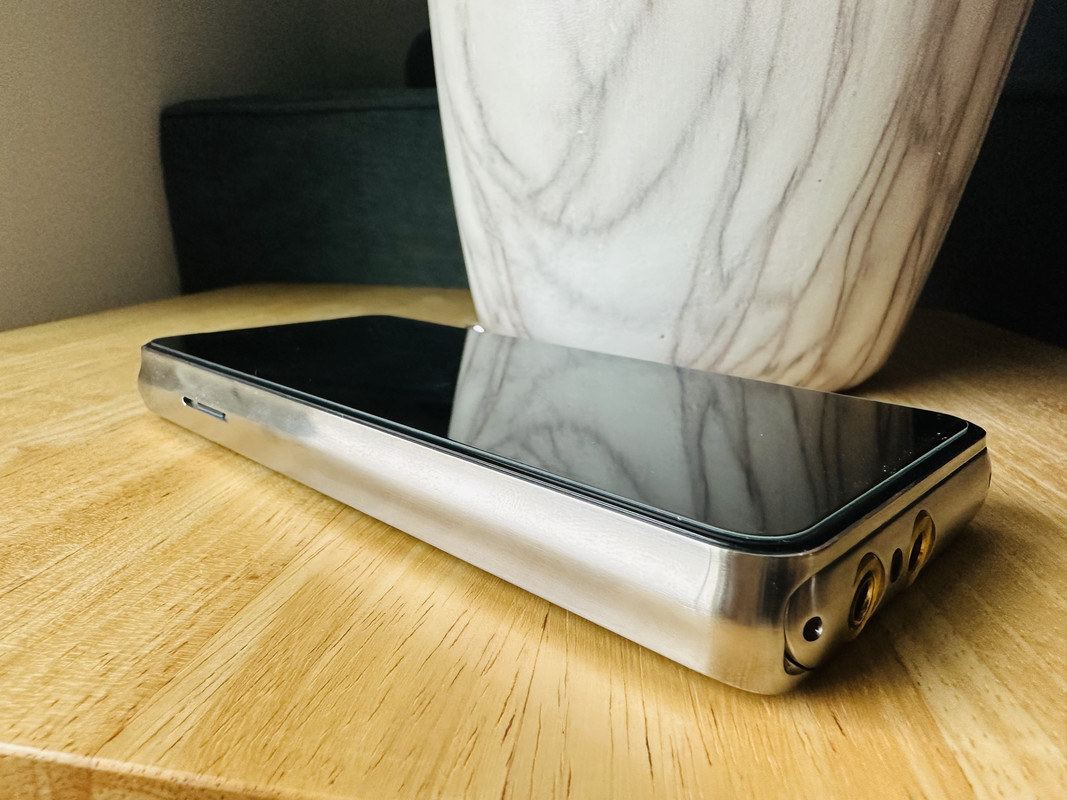
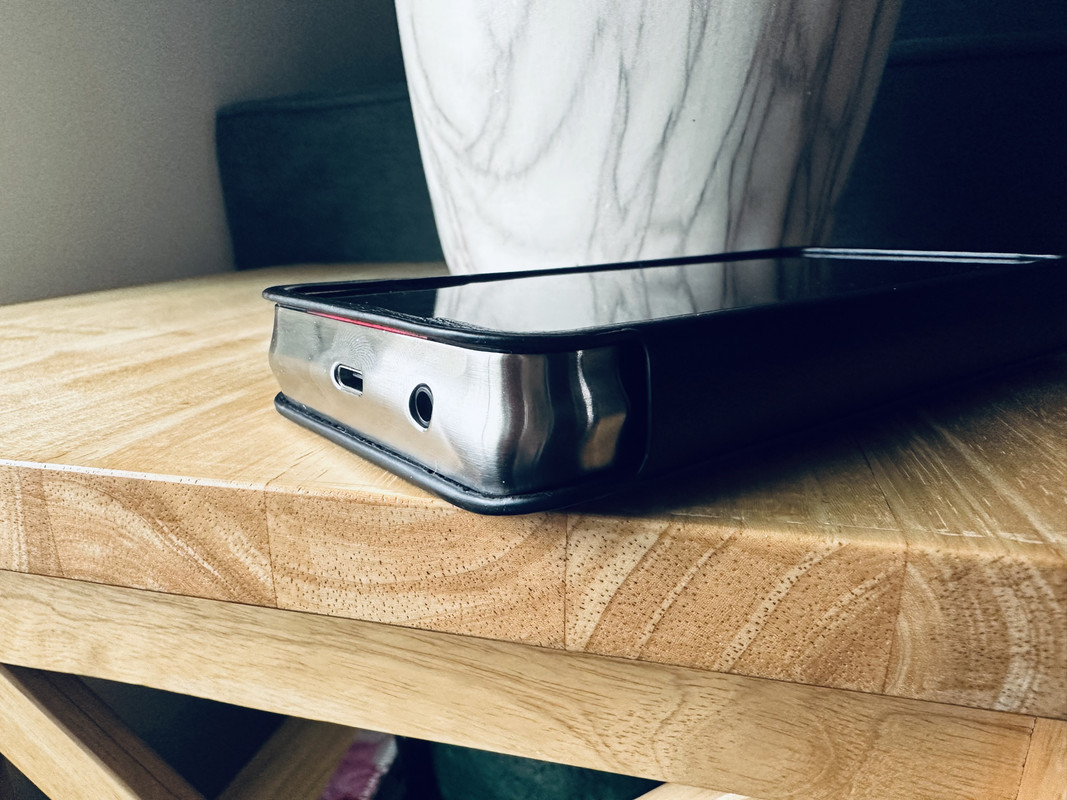


I have the predecessor DX300 with AMP14 driving Fiio FH7 and i am more then happy with the results. This combo complements very good the Fiio FH7 which can be a little bright on some tracks. Amp14 card is a must have in my opinion. Soundstage, layering, bass, voices are very addictive. I am listening to Jazz, Vocals, Electronic, House and the Amp14 card never disappointed me.